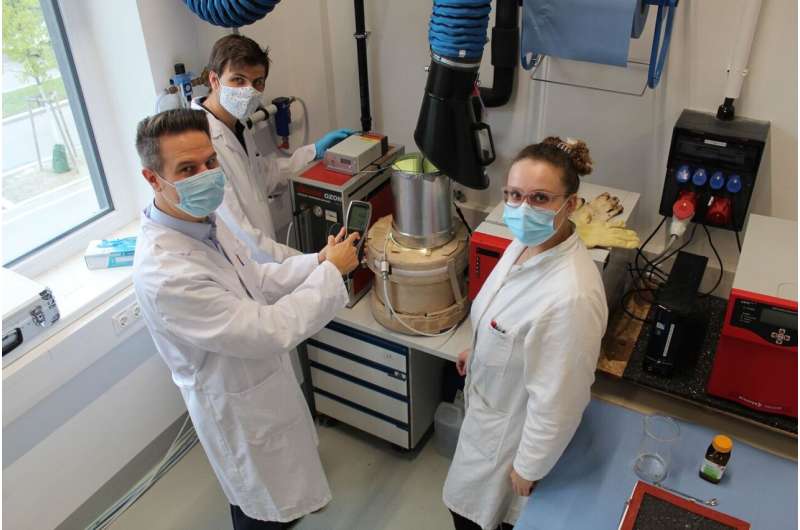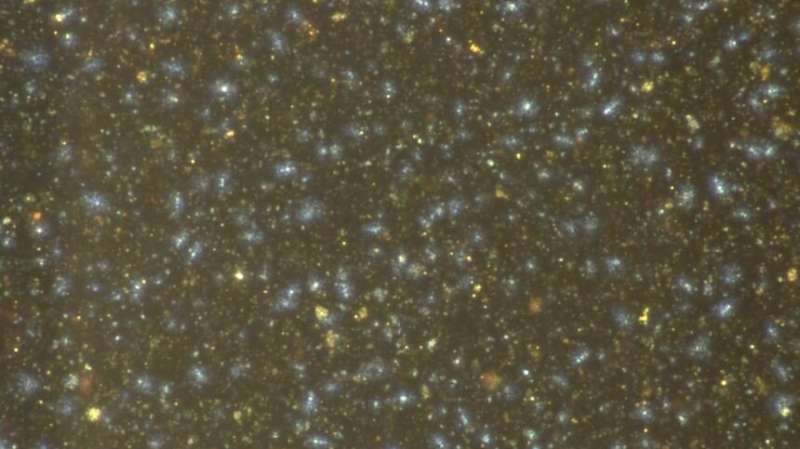Daylight causes road damage

The durability of asphalt depends crucially on bitumen—the black binder that holds the small stones in the asphalt together. As the bitumen ages, it can change its properties and become brittle, eventually causing the asphalt to crack. At TU Wien (Vienna), research is being carried out in the "Christian Doppler Laboratory for Chemo-mechanical Analysis of Bituminous Materials," which was established in 2020, to better understand these processes and make asphalt more durable.
Purely by chance, Johannes Mirwald (Institute of Transportation at TU Wien) has now come across a surprising effect: contrary to what was previously assumed, visible light in the blue and green range can cause bitumen to age more intensively and within a very short time. This light-induced change in bitumen has now been investigated in detail at TU Wien. Solar radiation must definitely be taken into account in future research and in estimates for the life span of roads.
Chance discovery in the laboratory
"The research project started with some strange observations that nobody could explain at first," says Prof. Bernhard Hofko from the Institute of Transportation at TU Wien. "We had bitumen samples lying around in glass containers in the laboratory, and on closer examination we noticed that their surface had changed after a relatively short time."
Such changes might have been expected at high temperatures, but not at room temperature in the lab. Intense UV radiation could also be considered as an explanation for such changes, but the glass actually absorbs most of the UV radiation and only lets the visible part of the sunlight through. "So we decided to take a closer look at this strange phenomenon with special microscopes," says Bernhard Hofko.
Bitumen samples were illuminated in a very special way, with different precisely defined light colors, from red with a rather long wavelength to the UV range with short wavelengths. "Until now, it was assumed that the high-energy UV light had the strongest influence on the aging of bitumen. Visible light was not expected to have any significant effect," says Johannes Mirwald. But the measurements clearly showed: at all the light wavelengths examined, changes in the bitumen surface could already be detected after 15–20 minutes. The strongest effect actually occurs in the UV range, but the effects of visible light are similarly drastic—with an additional maximum in the wavelength range of blue and green light. If the light condition on the earth's surface and the influence of the atmosphere is also taken into account, whereby UV light is attenuated significantly more than blue or green light, it becomes apparent that blue light causes the strongest aging effect on road surfaces.

Oxidation leads to cracks
The light accelerates the oxidation of the material, and when bitumen oxidizes, its mechanical properties change. It becomes stiffer and therefore more susceptible to cracking. "Initially, oxidation under the influence of light only takes place in the top layers of the material—in the outermost micrometers of the bitumen sample," says Johannes Mirwald. "But this is merely the initial spark for a far-reaching effect: small cracks ensure that oxygen can penetrate deeper into the material, stresses develop inside the material, the cracks become deeper and ultimately this can lead to lasting damage to the asphalt."
Until now, aging experiments with bitumen have mainly been carried out in the dark. This will now change. "Our measurements show: If you want to predict the durability of asphalt, then you definitely have to take solar radiation into account," says Bernhard Hofko. Moreover, where the solar radiation is particularly high, you usually also have to deal with high temperatures, which further intensifies the effect.
"It is an absolutely amazing result that no one had expected—something like this doesn't happen often in research," says Bernhard Hofko. In any case, this new finding will bring about important changes for the science of road engineering.
More information: Johannes Mirwald et al, Impact of UV–Vis light on the oxidation of bitumen in correlation to solar spectral irradiance data, Construction and Building Materials (2021). DOI: 10.1016/j.conbuildmat.2021.125816
Provided by Vienna University of Technology





















